We drove up to the Williamsburg, VA, area to tour several of the historic sights. Leaving Norfolk was a little more adventuresome than we thought. We got on the interstate heading north and our GPS (Betty) told us to head northeast. We decided she was incorrect so we went west instead and found ourselves heading into downtown Portsmouth. Another change and we headed south to get back to where we thought we should be going.
The Captain decided to pull over and check out the map which was a good idea because there was a low clearance bridge that we couldn't get under. Again we went west which lead us to the correct interstate but it also had a tunnel and that tunnel was backed up for 5 miles dues to a stalled auto. So we maneuvered again and the trip which should have taken about 1.5 hours took almost four.
 |
| On the way we crossed the beautiful James River. |
 |
Jamestown Island is the home to the first permanent English settlement called Jamestown. About 20 miles further is Yorktown, the last major battle of the American Revolution. The town sites are connected by the picturesque Colonial Parkway. If you continue further on the parkway it will take you to Colonial Williamsburg.
|
 |
The site of the first landing on May 11, 1607, Jamestown was established by 104 men and boys. It began as a commercial enterprise of the Virginia Company of London, chartered by King James I. From 1607 to 1699, Jamestown was the principal settlement of the Virginia Colony, the first of 13 colonies that became the United States. The early years were very difficult while the town was being established and the first crops they planted mostly failed. They finally found a crop that flourished in the area and was considered very valuable in Europe. That crop was tobacco.
|
 |
| The Memorial Church in Jamestown. |
 |
This church is built on the foundation of the original church.
|
 |
| The cobblestone and brick foundation below supported the original church built in 1617. It was within this church that the first representative legislative assembly in America convened from July 30 to August 4th, 1619. |
 |
| Some old tombstones alongside the church. |
 |
This is a 17th century depiction of Pocahontas, engraved in 1616 when she was in London. Pocahontas adopted English lifestyles after she was baptized and married John Rolfe in 1614. She died on March 21, 1617, and was buried in St George's Church in Gravesend, England.
|
 |
| A reconstruction of the barracks found at Fort James. |
 |
| Cannon overlooking the James River. |
 |
| A statue of John Smith. |
We traveled up the parkway to Yorktown, the last major battle of the Revolutionary War fought in 1781. The battle was a decisive victory by a combined force of American Continental Army led by General George Washington, and French Army troops led by Comte de Rochambeau over a British Army commanded by British Lord and Lieutenant General Lord Cornwallis.
The French and American armies united north of New York City during the summer of 1781. The British fleet that was coming to relieve Cornwallis was defeated at the Battle of Chesapeake blocking any escape by sea. Lord Cornwallis was ordered to make a defensible deep-water port which he began at Yorktown. By late September Washington and Rochambeau arrived and completely surrounded Cornwallis and his troops. Cornwallis withdrew his troops from most of his outer defenses to consolidate his position behind earthworks.
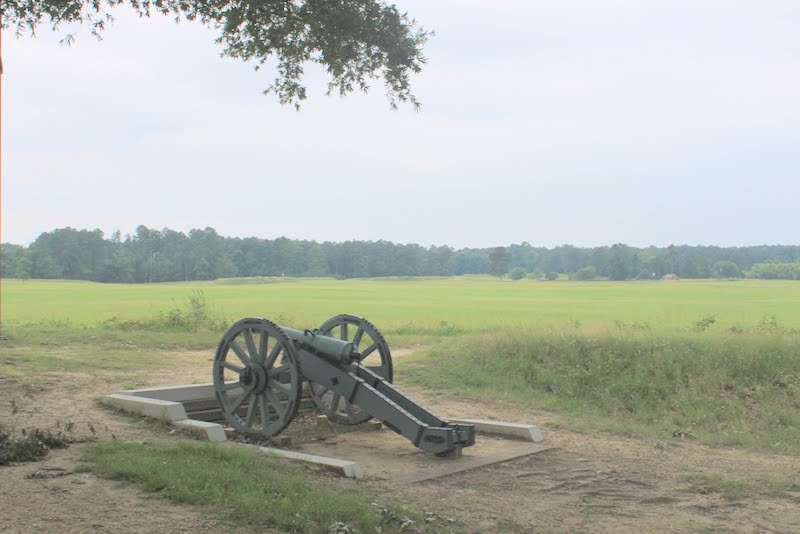 |
| Looking over the Yorktown battlefield. |
 |
The Allied troops advanced and opened fire on the British but they could not move forward because of two detached earthen forts called 'redoubts' manned by the British. On the night of October 14th the French troops attacked Redoubt 9 and the American troops stormed Redoubt 10 capturing both positions in 30 minutes.
|
 |
The redoubts had to be scaled by the troops and then they had to climb a hill while the British troops fired on them. The troops continued to advance as they drove the British back to the York River. Cornwallis ordered his troops to escape by crossing the river but an unexpected storm came up and many of the soldiers drowned. Three days later, Cornwallis proposed a truce.
|
 |
Officers from both side met at the Moore House to negotiate the surrender terms. After two days, the surrender took place on October 19th. Lord Cornwallis, claiming to be ill, was absent from the ceremony. With the capture of over 7,000 British soldiers, negotiations between the United States and Great Britain began, resulting in the Treaty of Paris in 1783.
|
 |
| In the visitors center we were able to walk on the replica of a ship from that era. |
 |
| A cannon on the ship. |
Our last stop was at Colonial Williamsburg. It was not exactly what we had expected. It is a revolutionary city that has been restored and is filled with actors in period costumes. There are many shops that demonstrate the crafts from that period and they also sell their wares. Actors dressed as British soldiers rode horses through the streets and had confrontations with local citizens giving you a flavor of the life in those days. There were also many shops and restaurants that would interest mature audiences. But at $46 per person admission fee it was a bit steep. Also, once inside, if you wanted to view a show they were performing, or look at certain exhibits, there was an additional cost.
To get the younger crowd involved, the company that runs Colonial Williamsburg offers a scavenger hunt that involves the use of cell phones for special codes and directions. You must find specific places and show up there at specified times in order to move on to the next level. Our grandson, Lee, got involved with it and we eventually teamed up with two women and their youngsters as we raced about the town moving from place to place looking for clues. It took most of the day and we did go from one end of the town to the other but had little time to stop and really look at or learn about the history of Williamsburg.
We found out, at the end of the day, that one end of the town is a more modern Williamsburg with an eclectic lifestyle enjoyed by the students at William and Mary College, which is close by. You can actually walk into historic Williamsburg from that end without having to pay an admittance fee but you aren't allowed to enter certain areas. Since we were busy on the scavenger hunt most of the day it was a moot point.
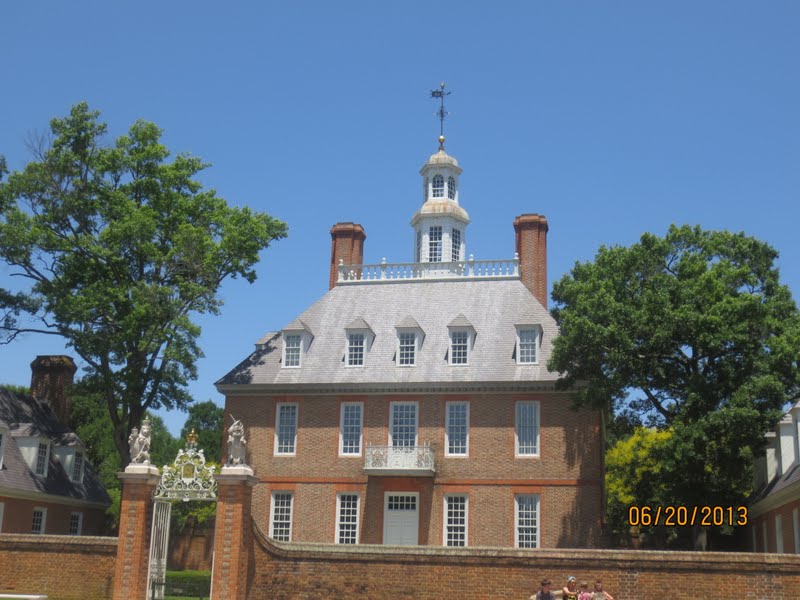 |
| The Governor's House. He lived grandly. |
 |
| A working kitchen in the Governor's House. |
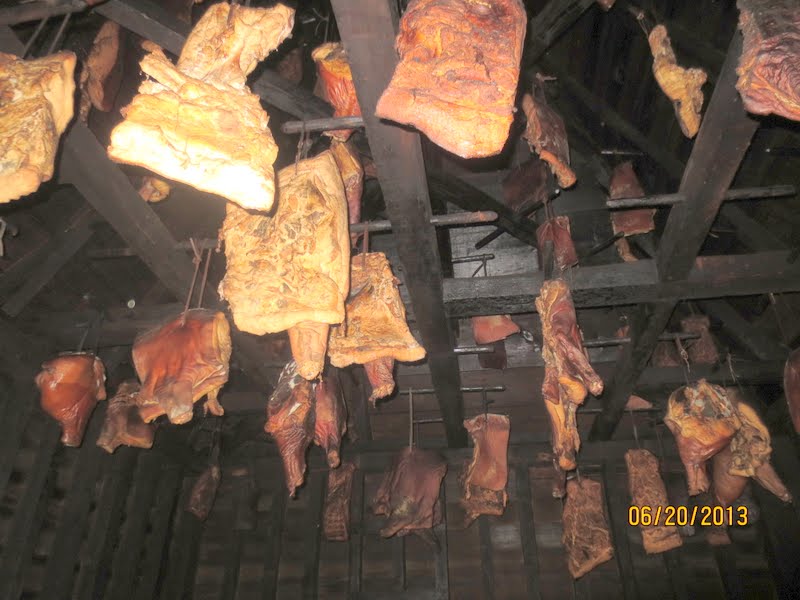 |
| Smoked meat. |
 |
| A beer cellar. |
 |
| The wine cellar. |
 |
| Formal gardens. |
 |
| Beautiful flowers. |
 |
| A restored convertible top carriage built around 1818. |
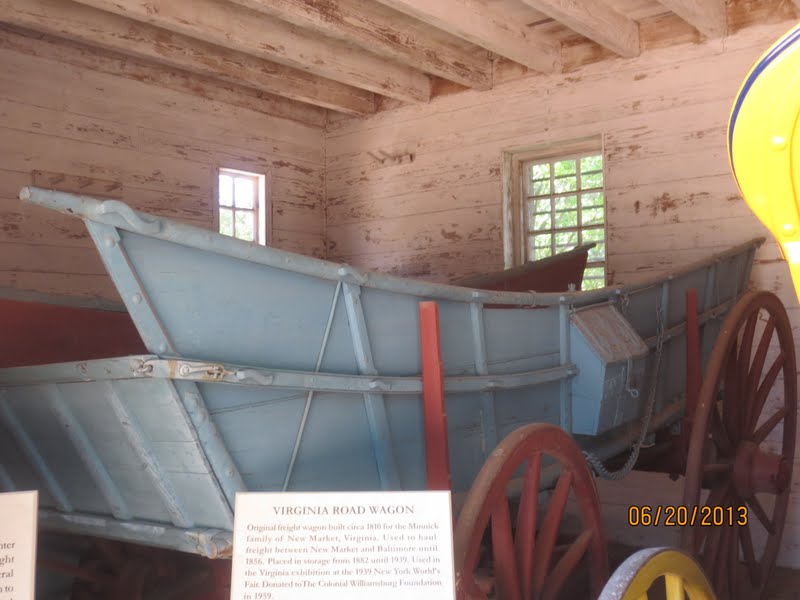 |
| A Virginia Road Wagon circa 1810. |
 |
| One of the 'residents' who helped give clues for the scavenger hunt. |
 |
| Many of the homes were very old and restored. |
 |
| A view down one of the streets. |
 |
| A seamstress hard at work. |
 |
| The blacksmith shop. |
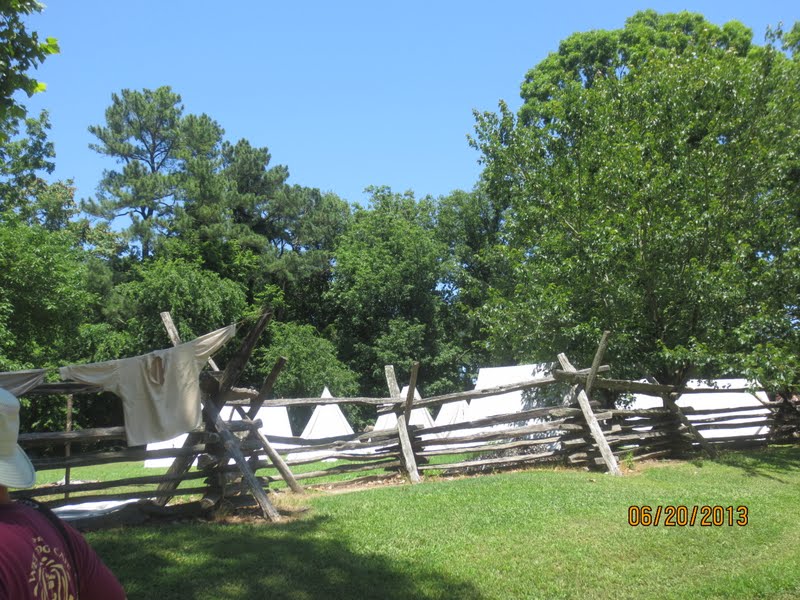 |
| The military encampment within Williamsburg. |
 |
| The hunt continues. |
 |
| British soldiers talking down to the townspeople. |
 |
| A working furniture store. |
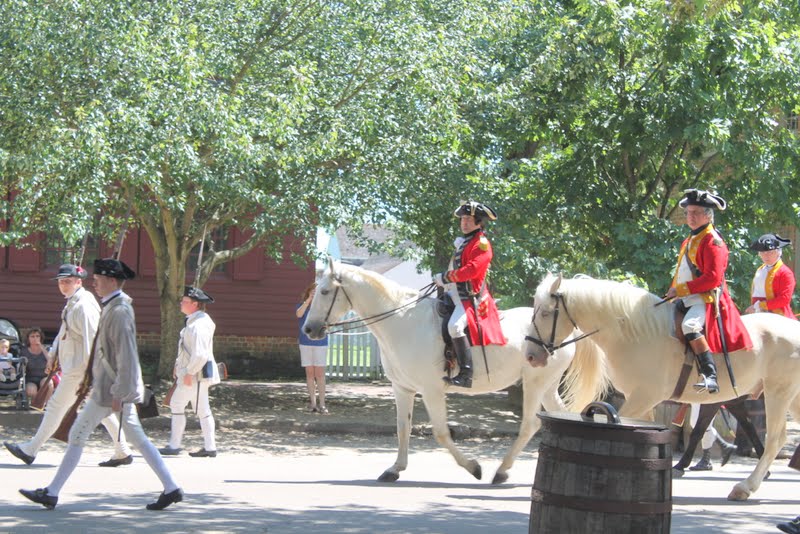 |
| The British were everywhere. |
 |
| The capitol in Colonial Williamsburg. |
 |
| Inside the Armory where they stored the muskets. |
 |
| When you are bad they send you to the stockades. The Captain looks like he enjoyed whatever it was that he did! |
 |
| Kind of looks like Ben Franklin. |
Time to move on. We are heading up to DC for another week of exploration. Peace!